BLADDER SLING (TOT sling) and Stress Urinary Incontinence
The most common bladder problems
- Stress incontinence. Urinary leakage with coughing, laughing, sneezing, and any type of physical activity. In more severe cases, just walking or going from the sitting to the standing position causes urinary accidents.
- Overactive bladder. Bladder urgency, frequency, and nocturia (e.g. getting up multiple times a night). In more severe cases, urge incontinence occurs (e.g. bladder urgency with a urinary accident before making it to the bathroom).
- Small bladder capacity. Normal bladder capacity is approximately 400 – 500 cc (e.g. the standard water bottle contains 500 cc or 16 oz.) A small bladder capacity is x < 200 cc).
- Incomplete bladder emptying. Needing to void for a second or a third time after initial voiding. Normally, you should be able to empty approximately 80-90% of your total bladder volume. For SEVERE incomplete bladder emptying, you empty less than 50% of your total bladder volume.
Treatment options for stress incontinence.
- First line of treatment. Kegel exercises. If you leak only a few times a month (e.g. 1-2 times per month), conservative management with Kegel exercises is the best option.
- Second line of treatment. Bladder sling (either a TOT sling or TVT sling). If you leak multiple times a week and this leakage is affecting your everyday quality of life, then next step is to consider a bladder sling. These bladder slings are now the gold standard in the surgical treatment of stress urinary incontinence. The TOT and TVT slings have almost wiped out every other surgical incontinence procedure in the last 50 years. These bladder sling procedures are quick 30-minute, outpatient procedures with a high success rate of approximately 90%. The incisions are small (less than one centimeter), the recovery is fast (less than one week), and the complication rate is very low.
Types of bladder slings:
The two most common types of bladder slings are:
- TOT sling (transobturator tape sling). This TOT sling is designed for MILD to MODERATE stress incontinence. A common example is a patient who leaks multiple times a week. She needs to wear a thin pad regularly or she decreases her exercise activities because of fears of a urinary accident.
- TVT sling (tension-free vaginal tape sling). The TVT sling is designed for the SEVERE and “Ridiculously” SEVERE. A common example is a patient who needs to wear a heavy duty pad every day and she changes her pad multiple times a day. She leaks urine with simple activities like walking or even going from the sitting to the standing position.
How does the sling work?
The basic concept behind stress incontinence is that the urethra tends to fall down with stress urinary incontinence (with coughing, laughing, sneezing, or any type of physical activity). When the urethra is hypermobile (falling down), the urethra loses its watertight seal, urine escapes from the urethral opening, and one leaks. The bladder sling acts like a hammock underneath the urethra, to provide support underneath the urethra. Therefore, when the urethra tries to fall down, the sling provides support underneath the urethra, and thereby prevents leakage.
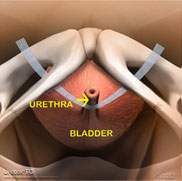
What is a TOT sling?
The TOT sling (transobturator tape sling) was invented in France in 2001 by Delorme and brought to the United States in 2002. The advantage of the TOT sling (in comparison to the TVT sling) is a decreased risk of bladder injury, bowel injury, and major blood vessel injury (because no retropubic needle passage is performed).
During the TOT procedure, two small (1 cm) incisions are made at the inner thigh, and an additional 1 cm incision is made suburethrally, at the midurethral level. (See the red dots for the incision location).
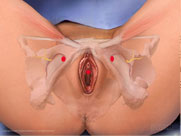
This procedure is performed under IV sedation or general anesthesia. The first step in the procedure is injection of local anesthesia below the urethra (see the red dot). Then, a 1-centimeter incision is made suburethrally, at the midurethral level and the dissection carried out to the pubic arch bilaterally. More specifically, the dissection is carried towards the anterior obturator notch in the obturator foramen.
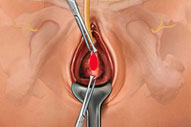
Next, the inner thigh incisions on both the left and the right sides (see the red dots) are injected with local anesthesia. A 1-centimeter incision is made in the inner thigh, at the level of the clitoris and 1.5 centimeters below the adductor longus tendon bilaterally.
A helical introducer is passed from the inner thigh incision through the obturator foramen until it touches the opposite index finger. Then the introducer is guided through the suburethral incision. The same procedure is repeated on the opposite side.
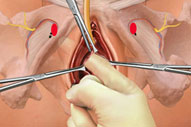
Then the synthetic polypropylene sling is attached to the helical introducer tips and helical introducers are removed. Now the tape is appropriately placed in the suburethral incision, at the midurethral level. The next step is the adjustment of the tape (which is the most important step). A curved Mayo scissor is placed between the tape and the urethra so that the tape will be placed in a tension-free manner. For patients with more severe incontinence, the tape needs to be placed a little tighter.
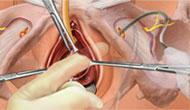
For less severe incontinence, the tape is placed a little looser. This is the art of placement of the bladder sling. The sling needs to be placed just right. If the sling is too loose, then one will continue to have incontinence. If the sling is placed too tight, then there is a possibility for incomplete bladder emptying and urinary retention.
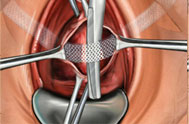
Once the tape is placed tension free, then the excessive tape at the inner thigh incision is cut bilaterally, and the inner thigh incisions are closed with Dermabond glue (like human superglue). The advantage of the Dermabond glue is that it not only closes the incision but acts like a waterproof seal to minimize any infection at the incision sites, especially during a shower. The suburethral 1 cm incision is closed with three interrupted dissolvable sutures.
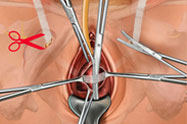
The success rate of the sling is approximately 90%. This is a 30-minute outpatient surgery with a recovery of less than one week. However, there are two important limitations from this surgery postoperatively. First, one cannot perform any heavy lifting for 2 months after the sling procedure. It takes approximately three months for one’s own tissue to grow into the sling to make the sling “strong.” This 2 month postoperative weight limitation applies to any type of hernia surgery. The second limitation is showers only for 2 months--no baths, no pools, no Jacuzzis, no intimacy for 2 months. It takes approximately 6-8 weeks for the three dissolvable sutures (placed vaginally) to be completely dissolved. This minimizes the possibility for any type of infection.
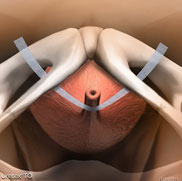
The most important factor in the placement of the sling is surgeon’s skill and experience. You want to find a surgeon who specialized in sling procedures and he/she has performed hundreds of bladder slings, rather than a less experienced surgeon who has only performed a small number of bladder slings.